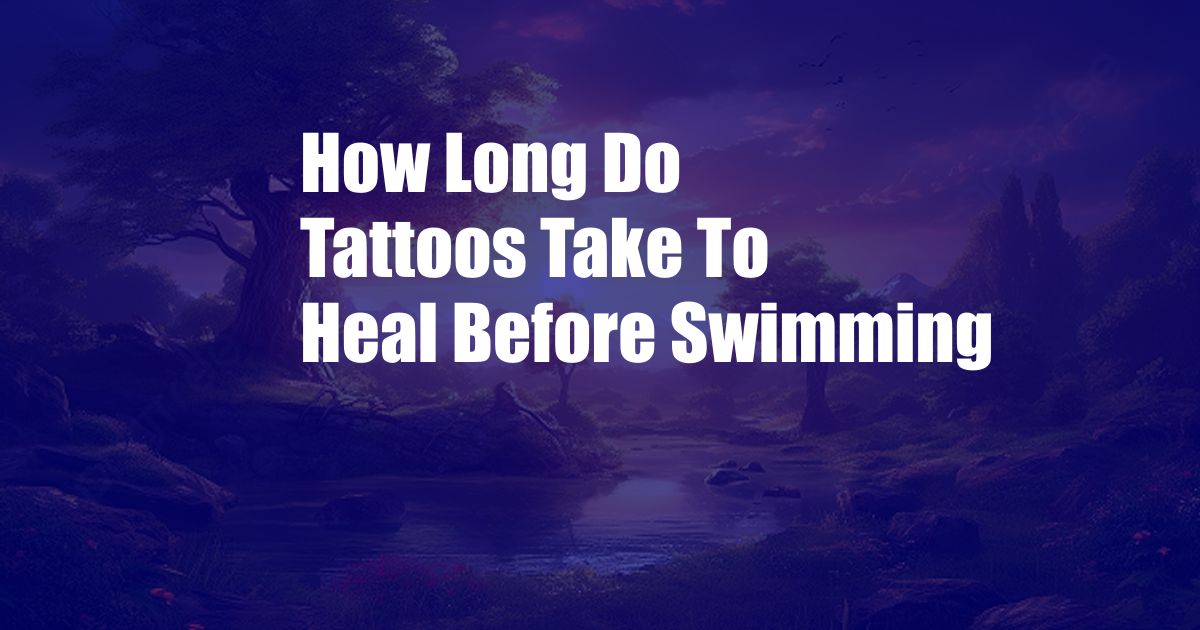
How Long Do Tattoos Take to Heal Before Swimming?
As a tattoo enthusiast with a fresh piece of body art, you might be eager to flaunt your new ink. However, it’s crucial to prioritize proper tattoo aftercare, which includes refraining from swimming until the tattoo has fully healed. This article explores the healing timeline of tattoos and provides expert advice on when and how to safely return to swimming.
The Healing Process of Tattoos
A tattoo is essentially a controlled injury to the skin, where ink is deposited into the dermal layer. The healing process involves several stages: inflammation, proliferation, and maturation. During inflammation, the body responds to the trauma by sending white blood cells to the area. Proliferation follows, where new skin cells begin to form and repair the damaged tissue. The final stage, maturation, can take several weeks or months and involves the strengthening and fading of the tattoo.
When to Swim After Getting a Tattoo
The recommended waiting period before swimming after getting a tattoo varies depending on several factors, including the size, location, and aftercare routine. Typically, it’s best to wait at least 2-4 weeks before submerging your tattoo in water. During this time, the tattoo should have scabbed over, and the new skin should be strong enough to withstand water exposure.
Why Swimming Too Soon Can Be Harmful
Swimming before a tattoo has fully healed can increase the risk of infection and other complications. Water contains bacteria and chemicals that can enter the open wound and cause problems. Submerging a fresh tattoo can also soften the scabs, leading to scarring or loss of ink.
Tips for Swimming with a Healed Tattoo
Once your tattoo has healed, you can safely return to swimming. However, follow these tips to minimize any potential risks:
- Keep the tattoo clean: Wash the area gently with soap and water before and after swimming.
- Apply sunscreen: Protect the tattoo from sun exposure, which can fade the ink and cause burns.
- Avoid chlorine: If possible, swim in saltwater or natural bodies of water that do not contain chlorine. Chlorine can be harsh on tattoos and may cause irritation.
- Moisturize: Keep the tattoo hydrated by applying a fragrance-free moisturizer regularly.
- Listen to your body: If you experience any pain, discomfort, or signs of infection, discontinue swimming and seek medical attention.
FAQs on Tattoo Healing and Swimming
Q: Is it okay to swim in a pool with a new tattoo?
A: No. Avoid swimming in pools with chlorine until the tattoo has fully healed.
Q: Can I swim in the ocean with a healed tattoo?
A: Yes, but be sure to rinse the tattoo with clean water immediately afterward.
Q: How long does it take for a tattoo to be waterproof?
A: Tattoos are not entirely waterproof. However, after the initial healing period, they can typically withstand brief exposure to water.
Q: Can I use antibiotic ointment on a tattooed area before swimming?
A: No. Overuse of antibiotic ointment can clog the pores and hinder the tattoo’s healing process.
Q: What should I do if my tattoo gets infected while swimming?
A: Seek medical attention immediately. Signs of infection include redness, swelling, pain, and discharge.
Conclusion
Remember that every tattoo heals differently. Pay attention to your body and consult a medical professional if you have any concerns. Follow the recommended waiting period and aftercare guidelines to ensure a safe and successful tattoo experience.
Would you like to learn more about tattoo care and other interesting topics? Explore our website for informative articles and resources.